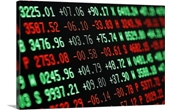Futures

Hot Rolled Futures: Scaled Hedge Approach
Written by Jack Marshall
December 23, 2021
The following article on the hot rolled coil (HRC), scrap and financial futures markets was written by Jack Marshall of Crunch Risk LLC. Here is how Jack saw trading over the past week:
Does a scaled hedge approach work to hedging future HR exposures? What are the pitfalls? What benchmarks work?
So, really, how volatile is this market? Spot peaked in September above $1,950/ST and has basically been retracing the last two months, giving back over $430/ST. Since the end of June 2021, spot rose over $260/ST from $1,689/ST and retraced over $430/ST from the high to our current $1,527/ST. In the last week, the spot price has declined around 9% from the previous week, making it one of the largest single week moves recorded. Given this move from sub $500/ST to just under $2,000/ST, there must be some concern that the current retracement could continue to gain further momentum, especially given the still robust premium to the average global price of HR.
We have experienced a volatile HR market this past year due to a changing tariff environment and COVID-related shortages. Given all the uncertainty, how would a scaled approach to hedging physical HR exposures have worked in a specific example. Let us look at hedging the individual months in Q1’22 starting back in June of this year. We can utilize a look back for the last six months and compare it to some other benchmarks. For example, if we had bought Jan’22, Feb’22 and Mar’22 HR hedges around roughly the 20th of each month June through December, we would have locked in the following set of futures prices by month (an approximation assuming even notional volumes per period and per month hedged).
January 2022 HR future—Jun’21 1385/ST, Jul’21 1585/ST, Aug’21 1580/ST, Sep’21 1495/ST, Oct’21 1520/ST, Nov’21 1531/ST, Dec’21 1420/ST, average purchase price rounded $1,502/ST.
February 2022 HR future—Jun’21 1280/ST, Jul’21 1530/ST, Aug’21 1550/ST, Sep’21 1431/ST, Oct’21 1395/ST, Nov’21 1430/ST, Dec’21 1312/ST, average purchase price rounded $1,418/ST.
March 2022 HR future—Jun’21 1204/ST, Jul’21 1475/ST, Aug’21 1500/ST, Sep’21 1375/ST, Oct’21 1286/ST, Nov’21 1350/ST, Dec’21 1240/ST, average purchase price rounded $1,347/ST.
Using a scaling in approach, we could have locked in our HR futures hedges just above $1,422/ST average for the Q1’22. For comparison purposes, if we had hedged the whole exposure using Jun’21 (1385, 1280, 1204) as the benchmark, we would have been better off due to the nature of the upward trending price. The average Q1’22 hedge price would have cost roughly $1,290/ST. Had we waited we might have paid the high, which would have fallen in August (1580, 1550, 1500) to $1,543/ST. And if we had waited until today to hedge, our average cost for the Q1’22 hedge would have been $1,324/ST, an average improvement of $98/ST over the scaled in hedge approach and only $34/ST more expensive than hedging in June’21, when the initial exposure was measured.
Editor’s note: Want to learn more about steel futures? Registration is open for SMU’s Introduction to Steel Hedging: Managing Price Risk Workshop to be held Feb. 14-15. You can get more information by clicking here.

Jack Marshall
Read more from Jack MarshallLatest in Futures

HR Futures: Summertime blues
Coming out of the holiday market and long weekend, it seems the HRC futures market has caught some post-vacation blues.

HR Futures: Financial players bullish on price, physical market participants not
We can interpret that managed money still has expectations of price strength while physical participants are running closer to a balance on a net basis.

HR Futures: Oil, Mideast tensions fail to move steel
After a hot start to June, the CME ferrous derivatives complex has cooled down.

HRC Futures: Could oil, ag price spikes drive steel higher too?
Could we see an abrupt shift now that oil prices have spiked higher? Will we see a rebound in the rig count? Will this create a snap-loading effect (think waterski rope), where the industry suddenly does a 180-degree turn? If so, will that bring with it increased demand for steel products used by the energy industry?

Flack: HR futures still on a wild ride
Never a dull moment in today's HR futures market.
